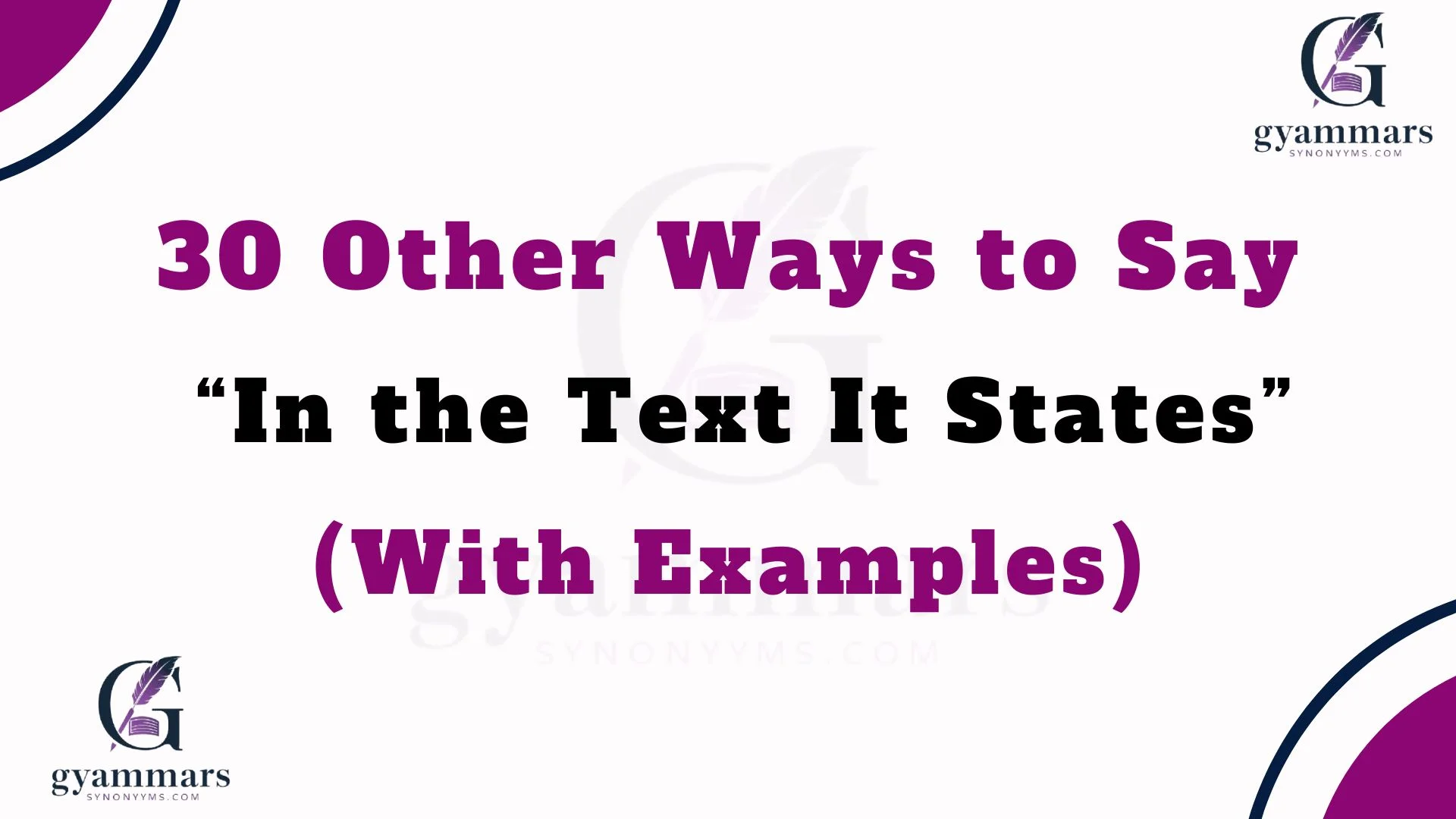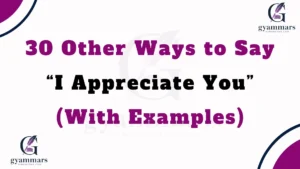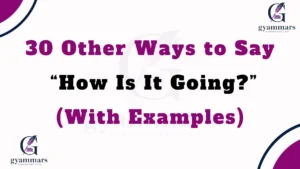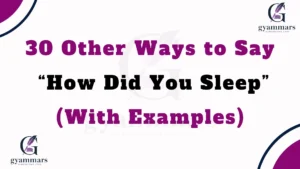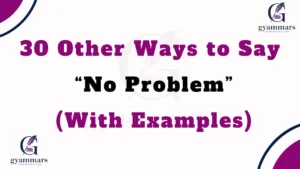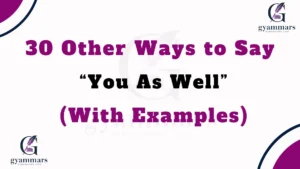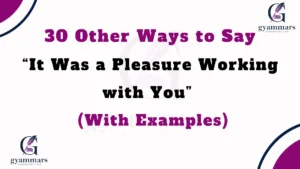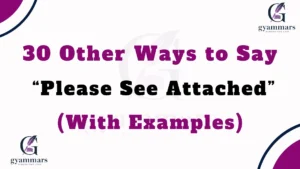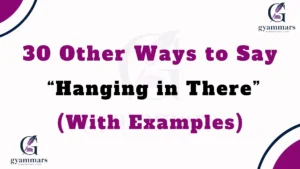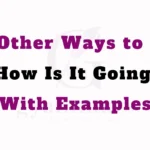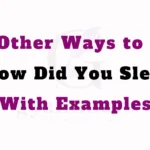Finding the right words can completely change how your message is received—especially when you’re trying to explain or reference something written. Phrases like “in the text it states” are clear and useful, but sometimes they sound too formal, repetitive, or academic. Using thoughtful alternatives can make your communication feel more personal, engaging, and natural, while still showing respect for the source material.
Let’s explore 30 better ways to say “in the text it states”, complete with definitions, examples, tones, and best-use cases.
What Does “In the Text It States” Mean?
The phrase “in the text it states” is commonly used to reference information directly from a written source—like an article, book, or passage. It signals that what follows is not your opinion, but something that was explicitly mentioned or written by the author.
It’s most often used in academic writing, literary analysis, or research discussions to ensure clarity and proper attribution.
Is It Professional/Polite to Say “In the Text It States”?
Yes, it’s professional, but not always the most natural in conversational or creative writing.
While it’s clear and accurate, it can sound robotic or overly formal in everyday communication. Using alternatives helps you sound more fluent, thoughtful, and connected to your audience—especially when paraphrasing or discussing a shared reading.
Pros or Cons of Using “In the Text It States”
Pros:
- Clear and easy to understand.
- Shows respect for the author’s words.
- Works well in formal writing or essays.
Cons:
- Sounds repetitive or stiff in conversation.
- Can limit emotional tone or engagement.
- Not ideal for creative or persuasive writing.
Synonyms For “In the Text It States”
- The Passage Mentions
- According to the Author
- The Text Suggests
- The Passage Indicates
- As Stated in the Text
- The Author Writes
- The Passage Explains
- As Mentioned in the Passage
- The Excerpt Reveals
- The Text Highlights
- The Passage Clarifies
- The Text Emphasizes
- The Author Notes
- The Story Shows
- The Paragraph States
- The Section Points Out
- As Written in the Passage
- The Writer Suggests
- The Book Demonstrates
- The Reading Shows
- The Sentence Reveals
- The Chapter Explains
- The Excerpt Demonstrates
- The Work Depicts
- The Text Describes
- It Is Written That
- The Source States
- As Found in the Text
- The Author Indicates
- The Passage Alludes To
1. The Passage Mentions
Definition: Indicates that a specific section of the text refers to a detail or idea.
Detailed Explanation: This phrase smoothly introduces what the passage says without being too repetitive or formal.
Scenario Example: “The passage mentions that the main character struggles with self-doubt.”
Best Use: Perfect for literary essays or class discussions.
Tone: Neutral and academic.
Additional Notes: Great substitute when you want a more fluid and descriptive tone.
2. According to the Author
Definition: Refers to something stated or suggested by the writer.
Detailed Explanation: It’s a respectful way to attribute an idea directly to the writer.
Scenario Example: “According to the author, hope is what drives the story forward.”
Best Use: Ideal for essays, book reviews, or analytical writing.
Tone: Formal but conversational.
Additional Notes: Keeps focus on the author’s perspective rather than the text itself.
3. The Text Suggests
Definition: Indicates that the text implies or hints at an idea rather than stating it outright.
Detailed Explanation: Perfect for deeper analysis where interpretation is needed.
Scenario Example: “The text suggests that forgiveness is a recurring theme.”
Best Use: Best in interpretive or analytical writing.
Tone: Reflective and thoughtful.
Additional Notes: Great for discussions that go beyond literal meaning.
4. The Passage Indicates
Definition: Shows evidence or points toward something in the text.
Detailed Explanation: Use this to emphasize proof or factual detail.
Scenario Example: “The passage indicates that she had known the truth all along.”
Best Use: Useful for critical analysis or essay writing.
Tone: Objective and academic.
Additional Notes: Good for highlighting clear evidence within the text.
5. As Stated in the Text
Definition: Directly connects your statement to a citation or quote.
Detailed Explanation: This keeps the formal structure while sounding slightly more elegant.
Scenario Example: “As stated in the text, honesty is portrayed as a virtue.”
Best Use: Formal essays or research writing.
Tone: Clear and authoritative.
Additional Notes: Works best when referencing direct quotations.
6. The Author Writes
Definition: Introduces a direct quote or paraphrase.
Detailed Explanation: Helps maintain connection between your analysis and the author’s own words.
Scenario Example: “The author writes, ‘Love is not bound by time.’”
Best Use: Quoting literature or articles.
Tone: Academic and respectful.
Additional Notes: Perfect for English literature essays.
7. The Passage Explains
Definition: Highlights how the text clarifies or defines something.
Detailed Explanation: This phrase emphasizes explanation rather than mere mention.
Scenario Example: “The passage explains the reasons behind his sudden decision.”
Best Use: Analytical or explanatory writing.
Tone: Informative and balanced.
Additional Notes: Great for summarizing key points of a section.
8. As Mentioned in the Passage
Definition: Refers back to information previously presented in a text.
Detailed Explanation: Polished and slightly conversational, often used in summaries.
Scenario Example: “As mentioned in the passage, trust plays a vital role.”
Best Use: Summaries or paraphrasing.
Tone: Neutral.
Additional Notes: Keeps your writing cohesive and smooth.
9. The Excerpt Reveals
Definition: Shows something important uncovered in a portion of the text.
Detailed Explanation: Ideal when describing a deeper or hidden meaning.
Scenario Example: “The excerpt reveals the true reason for her departure.”
Best Use: Analytical or emotional writing.
Tone: Insightful and expressive.
Additional Notes: Excellent for highlighting turning points or themes.
10. The Text Highlights
Definition: Emphasizes what the text draws attention to.
Detailed Explanation: Great for analytical discussions focusing on key messages.
Scenario Example: “The text highlights the importance of resilience.”
Best Use: Persuasive or interpretive essays.
Tone: Confident and reflective.
Additional Notes: Adds energy and focus to your commentary.
11. The Passage Clarifies
Definition: Shows that the text helps explain or make something clearer.
Detailed Explanation: Use this when the text resolves confusion or provides deeper understanding.
Scenario Example: “The passage clarifies that the argument is based on scientific evidence.”
Best Use: Academic or research-based essays.
Tone: Analytical and informative.
Additional Notes: Helps emphasize the educational or explanatory nature of a passage.
12. The Text Emphasizes
Definition: Points out what the text strongly focuses on or underlines.
Detailed Explanation: Great for identifying main themes or repeated ideas.
Scenario Example: “The text emphasizes the importance of staying true to one’s values.”
Best Use: Persuasive or thematic analysis.
Tone: Confident and reflective.
Additional Notes: Best when you want to draw attention to core messages or motifs.
13. The Author Notes
Definition: Introduces something the author specifically mentions or highlights.
Detailed Explanation: A respectful way to show the author’s deliberate wording or observation.
Scenario Example: “The author notes that this event marked a major turning point.”
Best Use: Book analyses, essays, or academic reviews.
Tone: Formal yet accessible.
Additional Notes: Keeps focus on the author’s perspective, not just the text.
14. The Story Shows
Definition: Points to what the overall narrative communicates.
Detailed Explanation: Ideal for storytelling, literature, or creative discussion.
Scenario Example: “The story shows that courage often comes from unexpected places.”
Best Use: Creative or narrative-based writing.
Tone: Warm, interpretive, and reflective.
Additional Notes: Encourages readers to think about the message beyond words.
15. The Paragraph States
Definition: Indicates that a particular paragraph contains a specific detail.
Detailed Explanation: Focused, clear, and works well for pinpointing references.
Scenario Example: “The paragraph states that the experiment had three main stages.”
Best Use: Technical or detailed writing.
Tone: Neutral and factual.
Additional Notes: Works best when you want precision and clarity.
Read More This: 30 Other Ways to Say “You Look Hot” (With Examples)
16. The Section Points Out
Definition: Highlights a particular part of the text that makes an observation.
Detailed Explanation: Slightly softer than “states,” but still clear and professional.
Scenario Example: “The section points out how culture influences behavior.”
Best Use: Reports or analytical writing.
Tone: Professional and calm.
Additional Notes: Perfect when referencing specific divisions within a text.
17. As Written in the Passage
Definition: Refers directly to something written word-for-word in the text.
Detailed Explanation: Adds authority when citing or paraphrasing exact language.
Scenario Example: “As written in the passage, kindness can heal even the deepest wounds.”
Best Use: Formal essays or quotes.
Tone: Respectful and academic.
Additional Notes: Use it when quoting directly or precisely.
18. The Writer Suggests
Definition: Shows that the author implies or hints at an idea.
Detailed Explanation: Ideal for discussions involving inference or interpretation.
Scenario Example: “The writer suggests that loss can lead to personal growth.”
Best Use: Analytical writing and literature essays.
Tone: Thoughtful and insightful.
Additional Notes: Perfect for non-literal or symbolic meanings.
19. The Book Demonstrates
Definition: Shows that the book provides evidence or illustration of an idea.
Detailed Explanation: Indicates clear examples or proof from the text.
Scenario Example: “The book demonstrates how perseverance leads to success.”
Best Use: Book reviews and analytical discussions.
Tone: Assertive and academic.
Additional Notes: Highlights the didactic or illustrative purpose of the text.
20. The Reading Shows
Definition: Indicates what becomes clear when reading the passage.
Detailed Explanation: Great for summarizing understanding gained through reading.
Scenario Example: “The reading shows that friendship can overcome cultural barriers.”
Best Use: Educational discussions or summaries.
Tone: Neutral and informative.
Additional Notes: Works well in student writing or class reflections.
21. The Sentence Reveals
Definition: Points to what a single sentence uncovers or implies.
Detailed Explanation: Perfect for micro-analysis of writing style or meaning.
Scenario Example: “The sentence reveals her deep internal conflict.”
Best Use: Close reading or detailed analysis.
Tone: Analytical and precise.
Additional Notes: Adds depth and focus to your interpretation.
22. The Chapter Explains
Definition: Describes what a chapter clarifies or details.
Detailed Explanation: Works well for summarizing or referencing larger sections.
Scenario Example: “The chapter explains the origins of the protagonist’s fear.”
Best Use: Book reports or study summaries.
Tone: Structured and informative.
Additional Notes: Keeps writing organized and logical.
23. The Excerpt Demonstrates
Definition: Indicates that a short portion of the text shows an idea clearly.
Detailed Explanation: Excellent for analyzing a specific example from the text.
Scenario Example: “The excerpt demonstrates how the writer builds suspense.”
Best Use: Analytical and educational writing.
Tone: Objective and confident.
Additional Notes: Highlights proof or technique effectively.
24. The Work Depicts
Definition: Shows how a piece of writing represents or portrays something.
Detailed Explanation: Great for creative or thematic exploration.
Scenario Example: “The work depicts love as both fragile and powerful.”
Best Use: Literary or art analysis.
Tone: Expressive and elegant.
Additional Notes: Suitable for describing tone, emotion, or atmosphere.
25. The Text Describes
Definition: Indicates how the text paints a picture or sets a scene.
Detailed Explanation: Works when the writing focuses on visual or emotional detail.
Scenario Example: “The text describes the village as peaceful and timeless.”
Best Use: Descriptive or narrative contexts.
Tone: Calm and detailed.
Additional Notes: Good for scene-setting or character analysis.
26. It Is Written That
Definition: Introduces something directly stated in the text.
Detailed Explanation: A timeless, almost biblical phrasing for direct references.
Scenario Example: “It is written that honesty is the best virtue.”
Best Use: Formal writing, essays, or rhetorical pieces.
Tone: Formal and authoritative.
Additional Notes: Adds a classic or elevated feel to your writing.
27. The Source States
Definition: Refers to what a specific source or reference material says.
Detailed Explanation: Common in academic research or formal reports.
Scenario Example: “The source states that climate change affects migration patterns.”
Best Use: Research papers and citations.
Tone: Academic and factual.
Additional Notes: Adds credibility and evidence-based clarity.
28. As Found in the Text
Definition: A polite way of showing that something comes directly from the material.
Detailed Explanation: Softer and more conversational than “in the text it states.”
Scenario Example: “As found in the text, the main theme centers on unity.”
Best Use: Student essays or reading responses.
Tone: Polished and friendly.
Additional Notes: Keeps writing clear without sounding mechanical.
29. The Author Indicates
Definition: Suggests that the author makes an idea known or hints at it.
Detailed Explanation: Works well when meaning is subtle but intentional.
Scenario Example: “The author indicates that the outcome was inevitable.”
Best Use: Analytical or interpretive essays.
Tone: Balanced and insightful.
Additional Notes: Ideal for showing authorial intent.
30. The Passage Alludes To
Definition: Suggests that the passage indirectly refers to another idea or work.
Detailed Explanation: Excellent for exploring symbolism or literary connections.
Scenario Example: “The passage alludes to biblical themes of redemption.”
Best Use: Literary analysis or creative discussions.
Tone: Thoughtful and sophisticated.
Additional Notes: Great for deepening understanding of hidden references.
Conclusion
By using alternatives to “in the text it states,” your communication instantly becomes more natural, expressive, and engaging. Each phrase lets you convey evidence while matching the tone, style, and emotion of your context—whether it’s an essay, a conversation, or creative writing.
The right words help you not only analyze better but also connect with readers more deeply.
FAQs
1. What’s the simplest alternative to “in the text it states”?
“The passage mentions” or “according to the author” are simple and natural.
2. Which phrase is best for formal writing?
Use “as stated in the text” or “the source states” for clarity and professionalism.
3. Can I use these in school essays?
Absolutely! Teachers love when students use varied, precise phrasing.
4. Which ones work best for creative writing?
Try “the story shows” or “the work depicts” to keep it expressive.
5. Why use different phrases?
Variety keeps writing fresh, intelligent, and emotionally engaging—not repetitive.

“Mia Rose at Grammar Synonyms is your ultimate guide to mastering language with style and precision. Whether you’re looking to enhance your vocabulary, perfect your grammar, or discover the ideal synonym, Mia Rose offers expert resources and creative solutions to help you express yourself flawlessly. With Grammar Synonyms, unlock a world of language possibilities and elevate every piece of writing you create.
